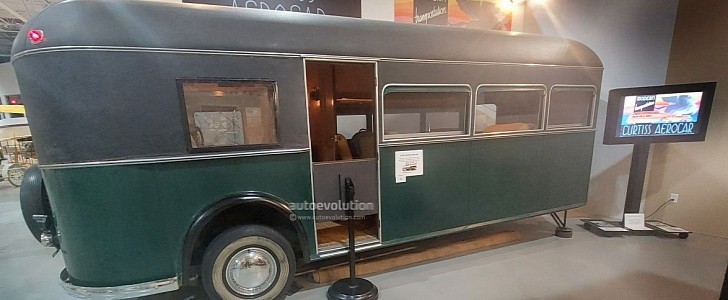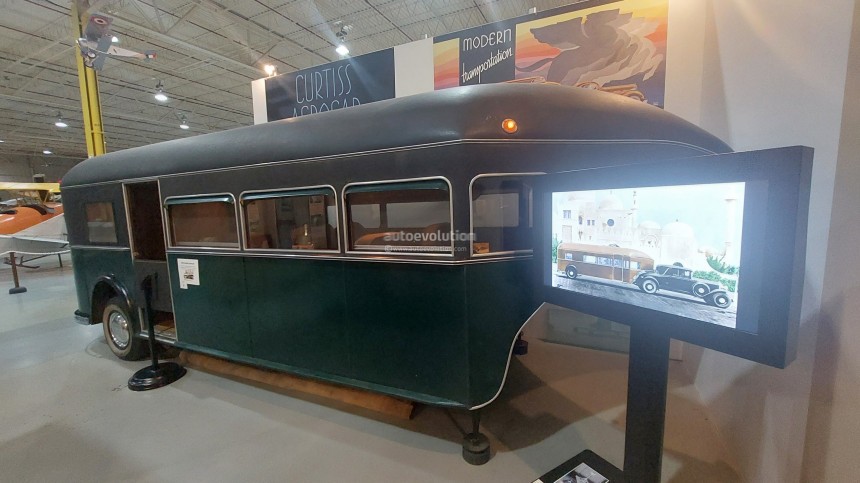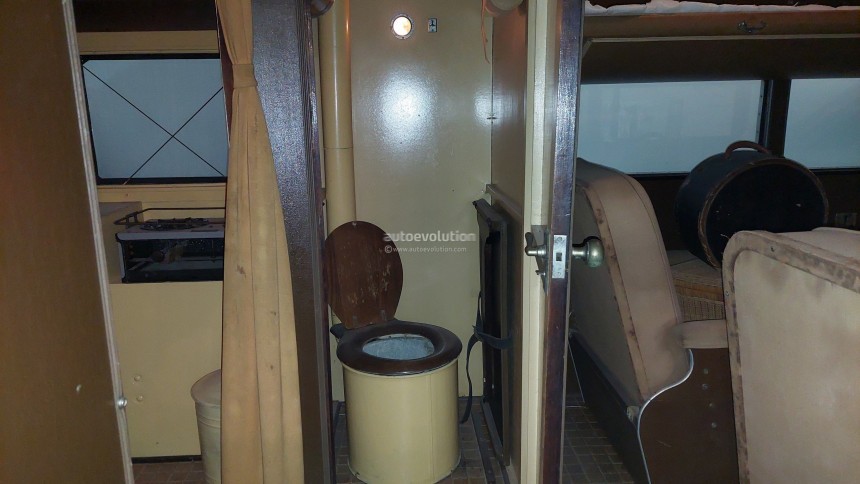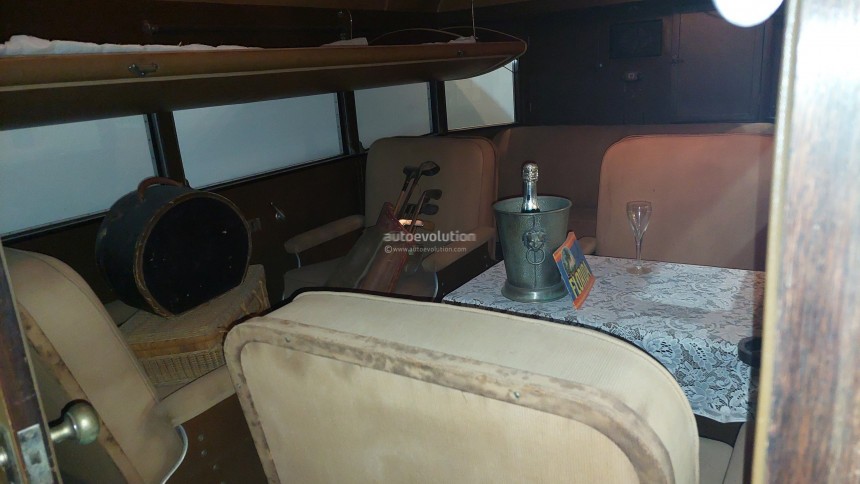In 2022, people are going crazy over towable recreational vehicles and travel trailers. By last year's estimates, RVs of all shapes and sizes represent an industry worth over $40 billion. But at least as far as towable fifth-wheel camper trailers, or caravans as Europeans call them, its genesis begins with a New York native called Glenn Curtiss.
Folks of all ages, behold, this is the Curtiss Aerocar. A quaint little trinket of the early 1920s designed by one of the early 20th century's greatest inventors. Glenn Hammond Curtiss was a man routinely on at the forefront of both automotive and aeronautical design. His exploits in building and designing motorcycles, bicycles, as well as aircraft made him one of the wealthiest men in America by the end of the First World War.
Being the brains behind a manufacturing empire at the height of wartime production often led to periods of ever-mounting stress for the eccentric captain of industry. His favorite activity Curtiss used to unwind in his increasingly scarce off time was embarking on camping trips, primarily in the New York Finger Lakes region in close proximity to his company factory in Hammondsport, New York.
With the war over, in 1919, Curtiss partnered with his half-brother Carl Adams to design something entirely novel. The idea was to create a fifth-wheel chassis, consisting of a special; coupling linking the trailer to the vehicle, which could be capable of being built upon by coachbuilders to create a completely unique and perfectly catered to the individual's wants and desires.
All for whoever could fork out nearly many thousands in 1920s money for what was essentially a home away from home with wheels. Each example was designed to be capable of electrical power, propane heating, and cooking and incorporated a bathroom and shower.
So them, all the things no modern trailer camper can be caught dead without, but 100 years ago. Much of the gargantuan cost of these machines went into the pneumatically controlled self-leveling trailer hitch, another novel technology developed by Glenn Curtis and all too often taken for granted in 2022. In the end, the project was originally dubbed the "Motor Bungalow" and could cruise at 55 miles per hour at a time when some cars couldn't even crack 45.
Curtiss's partnership with Adams ended in 1922, but through a series of business deals, he consolidated his partner's assets into what would become the Curtiss Aerocar. They became used for everything for use as passenger busses, mobile offices, and even the occasional traveling zoo.
This particular example comes to us on display via the Glenn H Curtiss Museum in Hammondsport, New York, a large warehouse-sized, federally-approved 501c (3) charitable museum dedicated to the technological exploits credited to the man himself.
Stepping inside the camper, it's plain to see that the lavatory is a tad smaller than the KZ Sportster you may or may not be looking at in another browser tab right now. At least by 1920s and 30s standards, it must have felt more than sufficient.
The period-correct toilet paper is another nice touch, pun very much intended. Moving to the kitchen, The factory set of white wooden cabinets look very much the same as you would find in the average American home a century ago, apart from the handy driving locks on each one.
A small two-burner stove is accompanied by another two-burner stove a few steps to just outside the kitchen. Direct your attention to the kitchen floor, and we find a small metal drain with an accompanying metal disk on the ceiling. That's right, folks. The same place you fry up your morning bacon and eggs is the same place you take your morning shower.
Moving to the leisure and sleeping quarters, we find overhead bunks accompanying a further four plush cloth upholstered captain's chairs. A rear couch sits behind the chairs, looking large enough to double as a bed, theoretically.
With all of the vintage golf clubs, champagne chest with matching glassware, and this antique fifth wheel camper complete the time capsule to 100 years ago look with flying colors. It's no wonder the Aerocar is often among the top favorite exhibits in the entire museum. If you're wondering what this type of camper would cost back in the late 30s, the museum pegs it at a bare minimum of $5,000 unadjusted. In 2022's money, that's a shade over $86,500, without factoring in a tow vehicle.
Considering the Great Depression was right around the corner, it was no wonder these ultra-rare beauties soon died off along with it. What a pity. Check back soon for more from our trip to the Glenn H Curtiss Museum here on autoevolution.
Being the brains behind a manufacturing empire at the height of wartime production often led to periods of ever-mounting stress for the eccentric captain of industry. His favorite activity Curtiss used to unwind in his increasingly scarce off time was embarking on camping trips, primarily in the New York Finger Lakes region in close proximity to his company factory in Hammondsport, New York.
With the war over, in 1919, Curtiss partnered with his half-brother Carl Adams to design something entirely novel. The idea was to create a fifth-wheel chassis, consisting of a special; coupling linking the trailer to the vehicle, which could be capable of being built upon by coachbuilders to create a completely unique and perfectly catered to the individual's wants and desires.
All for whoever could fork out nearly many thousands in 1920s money for what was essentially a home away from home with wheels. Each example was designed to be capable of electrical power, propane heating, and cooking and incorporated a bathroom and shower.
Curtiss's partnership with Adams ended in 1922, but through a series of business deals, he consolidated his partner's assets into what would become the Curtiss Aerocar. They became used for everything for use as passenger busses, mobile offices, and even the occasional traveling zoo.
This particular example comes to us on display via the Glenn H Curtiss Museum in Hammondsport, New York, a large warehouse-sized, federally-approved 501c (3) charitable museum dedicated to the technological exploits credited to the man himself.
Stepping inside the camper, it's plain to see that the lavatory is a tad smaller than the KZ Sportster you may or may not be looking at in another browser tab right now. At least by 1920s and 30s standards, it must have felt more than sufficient.
A small two-burner stove is accompanied by another two-burner stove a few steps to just outside the kitchen. Direct your attention to the kitchen floor, and we find a small metal drain with an accompanying metal disk on the ceiling. That's right, folks. The same place you fry up your morning bacon and eggs is the same place you take your morning shower.
Moving to the leisure and sleeping quarters, we find overhead bunks accompanying a further four plush cloth upholstered captain's chairs. A rear couch sits behind the chairs, looking large enough to double as a bed, theoretically.
With all of the vintage golf clubs, champagne chest with matching glassware, and this antique fifth wheel camper complete the time capsule to 100 years ago look with flying colors. It's no wonder the Aerocar is often among the top favorite exhibits in the entire museum. If you're wondering what this type of camper would cost back in the late 30s, the museum pegs it at a bare minimum of $5,000 unadjusted. In 2022's money, that's a shade over $86,500, without factoring in a tow vehicle.










